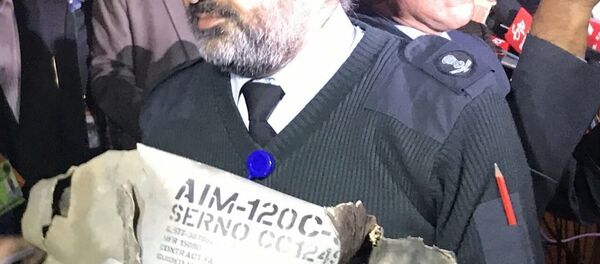Rajasimman Sundaram — The US-India Enhanced Cooperation Act (HR 2123) re-introduced last week by US Congressman Joe Wilson seeks to amend the US Arms Export Control Act and allow India a status on par with North Atlantic Treaty Organization (NATO) members. In 2017, the US National Defence Authorization Act (NDAA) recognized India as a major defence partner.
High-end military security agreements between India and the US were accelerated after the Indo-US nuclear cooperation agreement on October 10, 2008, which allowed India to break free of its nuclear apartheid and was hailed as the most important achievement of the United Progressive Alliance (2004-14) government under former prime minister Manmohan Singh.
Apart from military commerce which has increased in both scale and quality, the institutionalization of Indo-US military relations within the paradigm of the Indo-Pacific strategy challenges India's notion of strategic autonomy.
In March, according to Adam Smith, chairman of the House Armed Services Committee, renaming the US Pacific Command as the US Indo-Pacific Command in 2018 is an effort designed to "reflect the rising importance of India to our [US] role in the region."
READ MORE: India, US Conduct Anti-Submarine Drills Using New Secure Link for P-8 Aircraft
Rooted in humble beginnings in the form of bilateral naval exercises since 1992 and reflective of major geopolitical shifts of the time, Indo-US military relations are poised to transform four previously established agreements: Logistics Exchange Memorandum of Agreement, Communications Compatibility and Security Agreement, General Security of Military Information Agreement and Basic Exchange and Cooperation Agreement for Geo-spatial Cooperation.
At the first 2+2 ministerial-level dialogue last September, positioning an Indian naval attaché with US Naval Forces Central Command in Bahrain was decided. Quoting American poet Walt Whitman, "…. the orchestra have sufficiently tuned their instruments, the baton has given the signal," Prime Minister Narendra Modi said in his address to US Congress almost three years ago and added "there is a new symphony in play" noting that "the constraints of the past are behind us and foundations of the future are firmly in place."
There are three main drivers of the current Indo-US military partnership.
First, the US needs a major maritime partner that fits with its vision of a free and open Indo-Pacific region with significant naval combat capabilities. This need is born out of its threat perception as a global maritime power.
According to John Richardson, US chief of Naval Operations, in his briefing to the House Armed Services Committee during a Congressional hearing, "China is trying to create its own globally decisive naval force."
Second, China's deepening military ties with countries located in proximity to India is a cause of concern for India.
Third, simultaneous deterioration of US relations with Pakistan and China has allowed India to develop a strategic role for the US in South Asia.
While it appears that constraints from past Indo-US relations have diminished, the consequences for India's strategic autonomy over the short and long term remain uncertain. Developing military ties with a distant power while neglecting relationships with countries in the surrounding region is not a sustainable strategic policy.
READ MORE: Indian Regulator Gives IndiGo Airlines Notice Over US-Made Engines — Source
Two events in 2017, the China-India border standoff and the announcement of the largest ever Malabar series of US-India-Japan trilateral naval exercises in the Bay of Bengal, continue to serve as a reminder of the strategic trap that India could find itself in the near and distant future.
The views expressed in this article are those of the speaker and do not necessarily reflect those of Sputnik.
This article originally appeared on the Global Times website.





